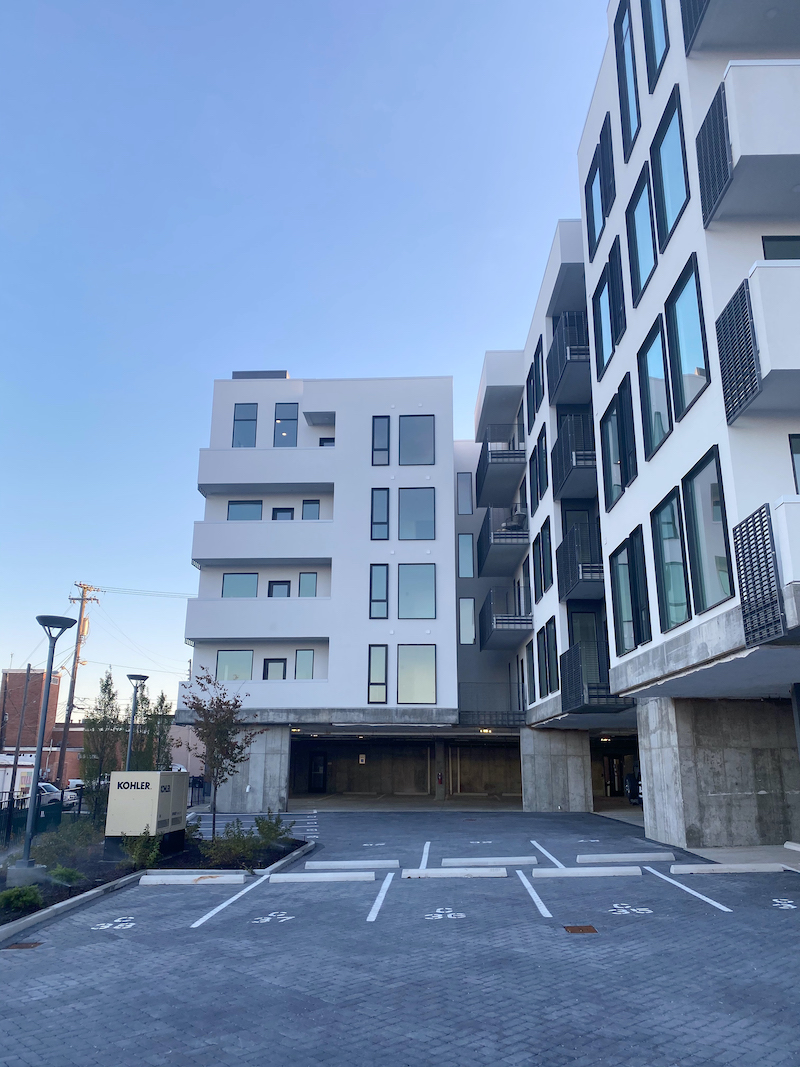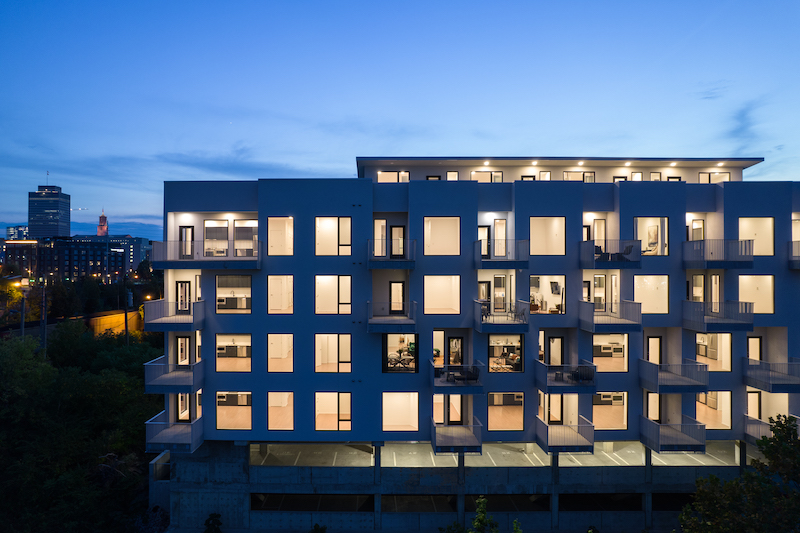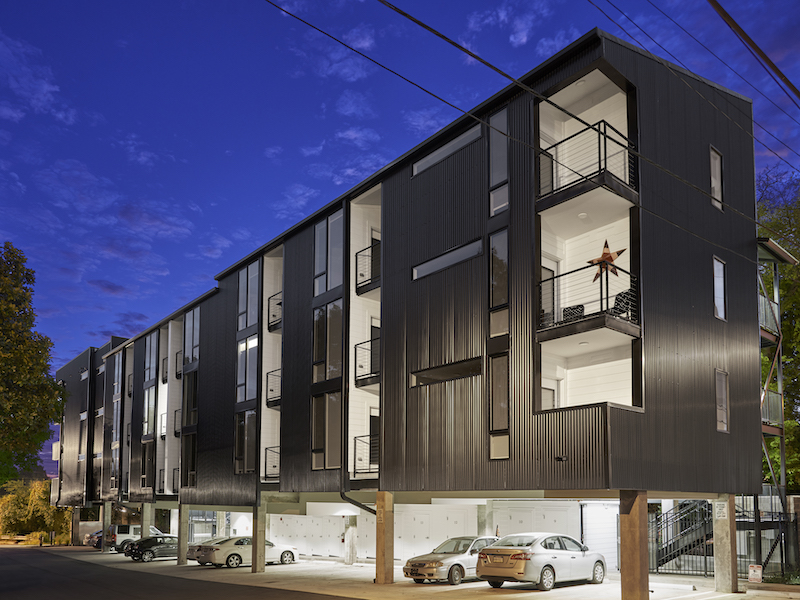In designing and building apartment and condominium projects, parking determines everything from site suitability to the building’s footprint to revenue optimization.
Throughout my career, I’ve had to turn down sites from a development perspective because we couldn’t make the parking work. Parking often dictates building layouts and sometimes even the number of units we can put into the building. For those of us in the multifamily sector, we want to create spaces for people to live, play, and grow, not just projects centered around giving people a place to store their cars.
Over the years, my colleagues and I at The Bradley Projects have developed strategies for site evaluation and alternative methods for maximizing parking and overall return on investment. The following are strategies for parking that we have found serve the site, the residents, and the owner/developer.
KNOWLEDGE AND THOROUGHNESS: STILL THE KEY FACTORS IN SITE ASSESSMENTS
First, there is no “thinking around” a site’s topography related to parking design strategies. As developers ourselves, we occasionally have to pass on a site solely because it doesn’t allow for optimal parking.
Take the matter of subterranean conditions, which can vary significantly across the U.S. In coastal areas, underground parking becomes difficult due to soil conditions and drainage, whereas in Nashville, where we are based, everything is on bedrock. That makes excavation time-consuming and expensive and carries certain liabilities due to the need for explosives to blast the rock. So it is important to identify the unique site-specific conditions before moving on to the rest of the site analysis.
STARTING POINTS FOR EVALUATING PARKING
We typically begin by looking at the geometries of the site, any irregularities, possible ingress and egress points, traffic flow and patterns, and assorted other unique features—all of which is part of our contextual analysis. We study layouts, which are a factor of dimensions, rhythms, and building codes.
Over the years, we have assembled a knowledge base of parking analyses from every project we’ve ever done, based on our work with numerous traffic engineers and parking consultants. Using this knowledge base we can be very efficient in evaluating a site. Specialized software technology can sometimes be helpful, but we often still rely on conventional evaluation methods due to cost and budget to get the job done.
We’ve also found that technology doesn’t quite go that last step to optimize the layout. We have been experimenting with software from several new tech companies, beta testing their products that promise to use in-depth algorithms to essentially compute the most efficient layout from the onset of the study.
We have found that, while these tools can produce results very quickly, the results have been much the same as what we would have developed without the program. We’ve also found the algorithm-based software can lay out the spaces mathematically but has not yet been able to finesse the geometries the way the human brain can. There are just times where a motorcycle space or two can fill in a strange area, or you can move trash collection somewhere else, or a transformer to another location—all solutions that surface through human collaboration, brainstorming, and experience.
THREE APPROACHES TO PARKING IN APARTMENT AND CONDOMINIUM PROJECTS
Once we have completed an initial analysis, we’re ready to consider what building typology makes sense. Usually, that falls into three categories: tuck under, cantilever, and over excavation.
Tuck under is usually the least expensive method for tight areas but only works well off alley-loaded sites. For our Fairfax Flats project, we managed to fit parking for 19 units into a tiny urban infill lot with this tactic.

In neighborhood-based urban areas with alley-loaded access, the tuck under approach can work well if the site allows the structure to address the main street and neighborhood while hiding and directing the cars to the alley.
Cantilever. In multifamily projects, cantilevers can break up the typical “box” multifamily development that is running rampant in so many cities and give architects a chance for a more progressive statement. They also provide an ideal way to work covered parking into the project. While more expensive than a tuck under, the cantilever approach can provide more parking spaces.

A site with an alley is still preferable for the cantilever technique, although, in tight spatial scenarios, we’ve done this off of a busy city street.
Over excavation is usually the most expensive option. In many urban areas this approach allows parking to be pushed to the extreme edges of the property, then covered by the building or by setback/outdoor space, depending on the zoning requirements.

Over excavation is expensive due to the excavation costs, shoring requirements at property lines, and the extra effort needed to build space underground. This approach lends itself to creating plaza-like spaces over the concrete “lid” of the parking area.
Some more enlightened cities have begun to incentivize developers to create this type of ground-level outdoor space to integrate new multifamily communities into the urban fabric and pedestrian realm. Such spaces also can increase retail or residential rents if they are seen as marketable. But it’s still a question of thoughtful and intentional design.
Over excavation can work just about anywhere there is enough room to get a car ramp down and parking allocated.
CHOOSING THE RIGHT PARKING STYLE
Ultimately, the cost-effectiveness equation is more complex than dollars in and dollars out. So many of our projects would never have penciled out without pushing hard on efficiencies and getting creative with how we solve for the highest level of efficiency while addressing all of the various types of users and circulation patterns.
Sometimes the cheapest option isn’t the best. I’ve seen the ROI on a multifamily development increase 20-25% just by rethinking how we handle the parking scenario. It was not because the parking solution saved construction dollars, but because it allowed 20-25% more units, or more retail space, or both.
It’s becoming much more critical to think about and be honest about how much parking your project needs. Cities across the map are lowering their parking requirements. People are becoming less car reliant. In the Nashville region, we are seeing an average 25% decrease in required parking in most areas of our urban areas—even down to zero required parking in areas on multimodal corridors. Nashville’s civic leadership is very wisely and progressively pushing much of the parking requirements back on developers and the market to resolve the parking situation instead of adopting an antiquated, one-size-fits-all policy.
THE FUTURE OF PARKING
Despite the reduced reliance on cars, we’re nowhere near a zero parking world, but the trend is undoubtedly moving toward less and less parking, more EV charging areas, and more drop-off/valet areas.
I’m excited to see the possibility of our cities becoming more populated with autonomous vehicles that can be developed for much safer conditions for riders and pedestrians.
ABOUT THE AUTHOR
Jared Bradley, AIA, NCARB, is Founder and President of The Bradley Projects, an architecture, construction, and development company headquartered in Nashville, Tenn.
Related Stories
MFPRO+ New Projects | Oct 30, 2024
BIG’s One High Line finally reaches completion in New York City’s West Chelsea neighborhood
One High Line, a luxury residential project spanning a full city block in New York’s West Chelsea neighborhood, reached completion this summer following years of delays related to investor lawsuits.
MFPRO+ New Projects | Oct 30, 2024
Luxury waterfront tower in Brooklyn features East River and Manhattan skyline views
Leasing recently began for The Dupont, a 41-story luxury rental property along the Brooklyn, N.Y., waterfront. Located within the 22-acre Greenpoint Landing, where it overlooks the newly constructed Newtown Barge Park, the high-rise features East River and Manhattan skyline views along with 20,000 sf of indoor and outdoor communal space.
Multifamily Housing | Oct 28, 2024
A case for mid-rise: How multifamily housing can reshape our cities
Often referred to as “five-over-ones,” the mid-rise apartment type is typically comprised of five stories of apartments on top of a concrete “podium” of ground-floor retail. The main criticism of the “five-over-one” is that they are often too predictable.
Adaptive Reuse | Oct 22, 2024
Adaptive reuse project transforms 1840s-era mill building into rental housing
A recently opened multifamily property in Lawrence, Mass., is an adaptive reuse of an 1840s-era mill building. Stone Mill Lofts is one of the first all-electric mixed-income multifamily properties in Massachusetts. The all-electric building meets ambitious modern energy codes and stringent National Park Service historic preservation guidelines.
MFPRO+ News | Oct 22, 2024
Project financing tempers robust demand for multifamily housing
AEC Giants with multifamily practices report that the sector has been struggling over the past year, despite the high demand for housing, especially affordable products.
Products and Materials | Oct 17, 2024
5 multifamily tech products for your next project
Multifamily housing and technological upgrades go hand-in-hand. From the rise in electric vehicle charging needs to the sophistication of smart home accessories, tech products are abound in the multifamily space.
Codes and Standards | Oct 16, 2024
North Carolina’s code policies likely worsened damage caused by Hurricane Helene
The North Carolina Legislature’s rejection of building code updates likely worsened the damage caused by Hurricane Helene, code experts say. Over the past 15 years, lawmakers rejected limits on construction on steep slopes, which might have reduced the number of homes destroyed by landslides.
MFPRO+ News | Oct 16, 2024
One-third of young adults say hurricanes like Helene and Milton will impact where they choose to live
Nearly one-third of U.S. residents between 18 and 34 years old say they are reconsidering where they want to move after seeing the damage wrought by Hurricane Helene, according to a Redfin report. About 15% of those over age 35 echoed their younger cohort’s sentiment.
Student Housing | Oct 9, 2024
University of Maryland begins work on $148 million graduate student housing development
The University of Maryland, in partnership with Campus Apartments and Mosaic Development Partners, has broken ground on a $148.75 million graduate student housing project on the university’s flagship College Park campus. The project will add 741 beds in 465 fully furnished apartments.
MFPRO+ News | Oct 9, 2024
San Francisco unveils guidelines to streamline office-to-residential conversions
The San Francisco Department of Building Inspection announced a series of new building code guidelines clarifying adaptive reuse code provisions and exceptions for converting office-to-residential buildings. Developed in response to the Commercial to Residential Adaptive Reuse program established in July 2023, the guidelines aim to increase the viability of converting underutilized office buildings into housing by reducing regulatory barriers in specific zoning districts downtown.

















